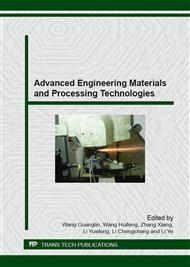p.88
p.95
p.102
p.108
p.114
p.119
p.123
p.130
p.136
Optimization Design of Diamond Circular Saw-Blade with Discontinuous Cutting and Uneven Distribution for Cutting Thin-Walled Tubes
Abstract:
To solve the problem of low efficient, big noise and vibration during cutting of the high strength high temperature thin-walled steel tubes, explore and research a new kind of blade with special ingredients for the working band, unique design for the overall blade structure, and process optimization. The investigations are done to obtain the basic cutting performance through the elaborate and literal formula, to ensure the blade to work smoothly, heat dissipation fast, and noise reduction considerable by using discontinuous and uneven distribution of working band and setting cooling--heat dissipation gaps and heat dissipation holes. Ten steps of saw blade manufacturing process are created——alloying of copper, tin and rare metals - water atomization - special ball milling - ingredients and mixture - whole sintering - gap laser cutting for cooling and heat dissipation-laser cooling hole-thermal gap and heat dissipation hole - calibration and stress relief - quality inspection. Eventually the actual saw blade performances are got: high efficiency, smooth cutting, low noise and long service life. Experimental study and production practice show that this kind of cutting piece has obvious advantages relative to the resin, which is a effective tool for cutting high strength high temperature thin-walled steel pipe.
Info:
Periodical:
Pages:
114-118
Citation:
Online since:
October 2015
Authors:
Price:
Сopyright:
© 2016 Trans Tech Publications Ltd. All Rights Reserved
Share:
Citation:


